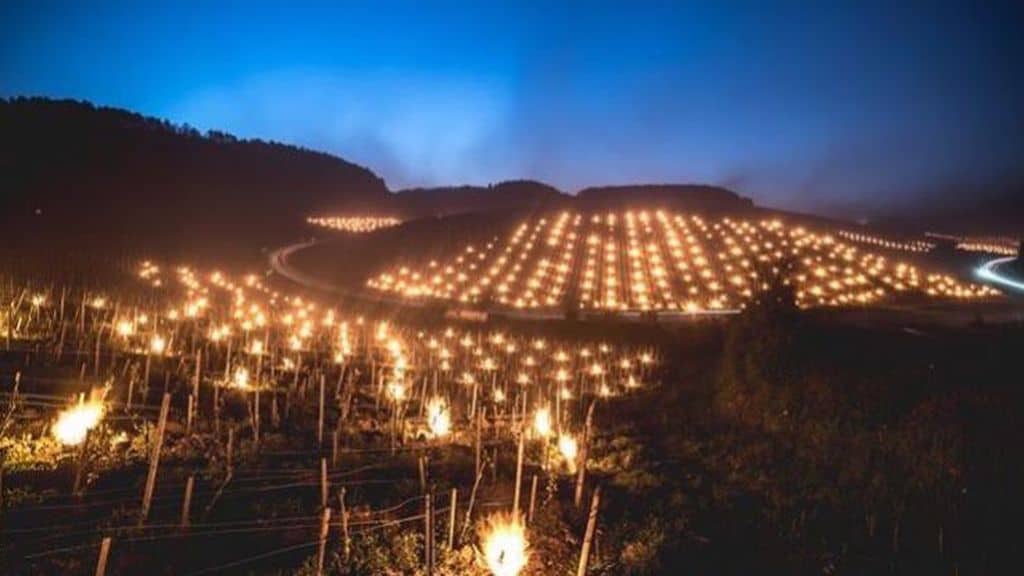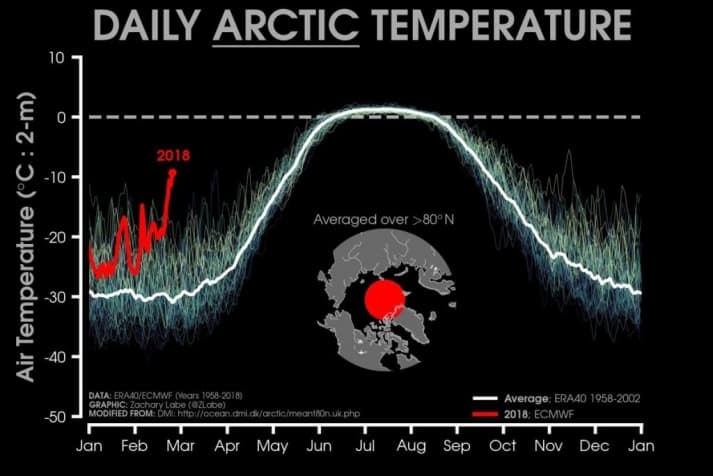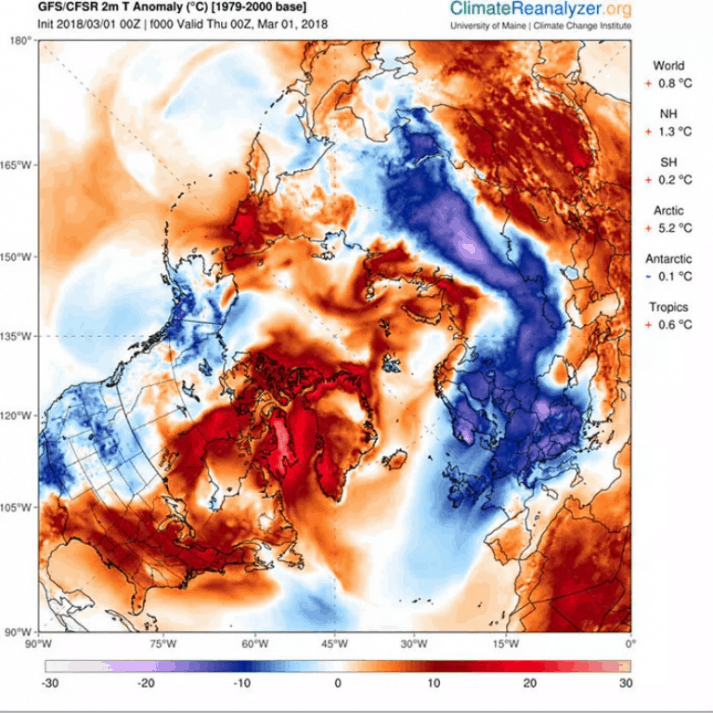BAD
WEATHER - POLAR VORTEX
This
year 2018 has brought a lot of situations of bad weather, here in Andalusia, as
in many other places on the planet.
It's
not so much the cases of bad weather that is remarkable, but their sequence,
their frequency and their intensity, and of course their consequences. In the
case of the peachtree here, we can talk about the formation of multiple fruits,
consequence of the heat in autumn, about the difficulty for the plants to go
dormant, due to a never-ending autumn, about the damage of spring frost, about
damages of wind friction on young fruits, hail damage, etc.
Since
June 2017, I mean in the space of one year, we can quote, in order, a
particularly hot summer, breaking the record of days to more than 40ºC, a very
dry autumn, hot and long, a winter without rain and very cold for the region,
spring frosts, then from the end of February, abundant and repeated rains,
accompanied by strong winds and numerous hailstorms, a month of May
particularly fresh and a lack of light, and a month of June that starts under
the sign of freshness and humidity.
Years
follow each other and are not really alike. They are so different that my
historical data, accumulated since 1974, don't serve me much.
As
I have already told you, mathematical models are usually very useful for
predicting and anticipating.
This
ability to anticipate is used to predict dates and severity of certain
phytosanitary risks, to predict the dates of harvest, to make adjusted
irrigation inputs, to set the dates of sowing, etc.
These
models represent an essential element in environmentally friendly farming
methods, whether it be integrated production or all forms of organic farming.
Agriculture
is based on natural cycles, themselves conditioned by meteorology. Weather
disturbances directly affect the behavior of plants and animals, with
potentially serious consequences for food production.
Picture of my own
I
note here that 2018 is the third year in a row showing tangible signs of an
evident climate change. An atypical year from time to time has always been the
rule. A prolonged dry spell over several years, too. But such a succession of
diverse anomalies is very remarkable.
So
far, we have been told that global warming is difficult to appreciate locally,
that it is the global data that must be taken into account. And until 2015, we
could see it, with a variability, all in all, quite usual.
But
this series of atypical three years becomes worrying. It seems that we are
entering a phase, also announced by meteorologists for a long time, that of
extreme phenomena.
An
article published last March in a Mexican digital magazine brings us some of
the explanation of this situation, and invites us to prepare ourselves to face
serious climatic difficulties in the decades to come.
The
weakening of the polar vortex causes extreme cold in Europe
Friday, March 2, 2018
The same phenomenon, which is
linked to global anthropogenic warming, affected our country last January
Figure 1:
The graph shows historic temperature values for this time of year in the
Arctic. The red curve corresponds to the temperature during the first months of
2018, the white curve the expected value. This phenomenon creates a historic
thaw in the region surrounding the North Pole.
By :
Dr. Alfredo Sandoval Villalbazo,
Coordinator of the Physics Departmental Service Program of the Department of
Physics and Mathematics of the Ibero-American University of Mexico City.
National Researcher Level II (SNI)
In 2014 was published in the
journal Nature a study in which was analyzed the effect of the Arctic warming
on the behavior of cold air currents that exist in this region of the planet
(1). The authors of the study showed that this warming would significantly
alter the balance of the polar vortex, to the point that very cold air masses
would eventually descend to the continents, producing extreme cold at
mid-latitudes.
Four years later, the effect
predicted by the authors of this study has been dramatically confirmed,
affecting the eastern coast of the United States, northeastern Mexico (2) and
more recently Siberia and Western Europe, where dozens of deaths have been
reported due to extreme cold.
The scenario was also anticipated,
more urgently, in a recent scientific communication sent to the North American
Meteorological Society; the latter was subjected to rigorous arbitration in May
2017 and published online on 1 February 2018 (3).
High levels of carbon dioxide from
human activities such as fossil fuel combustion and dietary habits have
resulted in the Arctic recording a much higher rate of warming than the rest of
the world (4).
During the months of January and
February 2018, temperatures recorded in the Arctic exceeded by 20ºC their
historical normal values (see Figure 1). The relatively warm air currents
that penetrated the northern polar circle acted as a dagger that resulted in
two large masses of cold air that, when descending to the continents, caused
unusually low temperatures, first of all in North America and then in Europe
(see Figure 2).
Figure 2: In this image, developed
by the Institute of Climate Change at the University of Maine on February 10,
2018, we observe the polar vortex cut in two parts. Temperatures around the
North Pole are about 20ºC above their normal value (red region near the pole),
while in Europe and North America temperatures are significantly lower (blue
regions).
Since the beginning of February,
the polar air mass in Siberia has begun to move towards Western Europe forming
what is known as the "Eastern Beast", which has caused impressive
snowstorms even in areas very south of Italy (see Figure 3).
The consequences of the thaw in the
Arctic are not limited to episodes of very cold winters that can cause
irreversible damage in vulnerable communities. "What's happening in the
Arctic does not stay in the Arctic," but alterations in models of extreme
atmospheric currents such as hurricanes with high intensity OR deadly heat
waves.
In addition, there have been
changes in the physical properties of oceans that affect ecosystems, causing
migration of many animal species and in some cases extinction scenarios.
Due to the unusual characteristics
of the climatic phenomena recorded in 2018, many means of communication abroad
have had to concentrate their efforts to provide an understanding of the
phenomenon of the weakening of the polar vortex (5). It is ironic that these
media have had to resort to information known for years, published in
high-level scientific journals, but until then gone unnoticed.
The concentrations of greenhouse
gases will not decline in the next decades until the levels recorded at the
beginning of the 20th century. It is therefore obvious that we will continue to
witness extreme events related to global warming. It is only thanks to a better
rapprochement between the scientific community, the society and the different
sectors of the governments that we will be able to successfully face the
scenarios derived from the ecological crisis that humanity is going through."
References :
(1)
Baek-Min Kim , Seok-Woo
Son, Seung-Ki Min, Jee-Hoon Jeong, Seong-Joong Kim , Xiangdong Zhang, Taehyoun
Shim & Jin-Ho Yoon, “Weakening of
the stratospheric polar vortex by Arctic sea-ice loss”, Nature Communications 5, 4646 (2014)
(2)
A. Sandoval-Villalbazo,
¿Por qué el calentamiento ártico agudiza el frío en nuestro país?, Prensa
Ibero, 16 de enero de 2018.
(3)
Kretschmer M. , D. Coumou,
L. Agel, M. Barlow, E. Tziperman & J. Cohen, 2017: “More-persistent weak stratospheric
polar vortex states linked to cold extremes”,: Bulletin of the American
Meteorological Society
(4)
A. Sandoval-Villalbazo,
“ANÁLISIS: Ritmo de calentamiento en el Ártico, superior al resto del planeta”,
Prensa Ibero, 2 de mayo de 2017.
(5)
Some international media
notes in which are included descriptions of polar vortex behavior in the
context of the cold in Europe are:
The magazine Forbes
The paper ABC in Spain
The British tabloid The Sun
The paper Financial Times





Aucun commentaire:
Enregistrer un commentaire